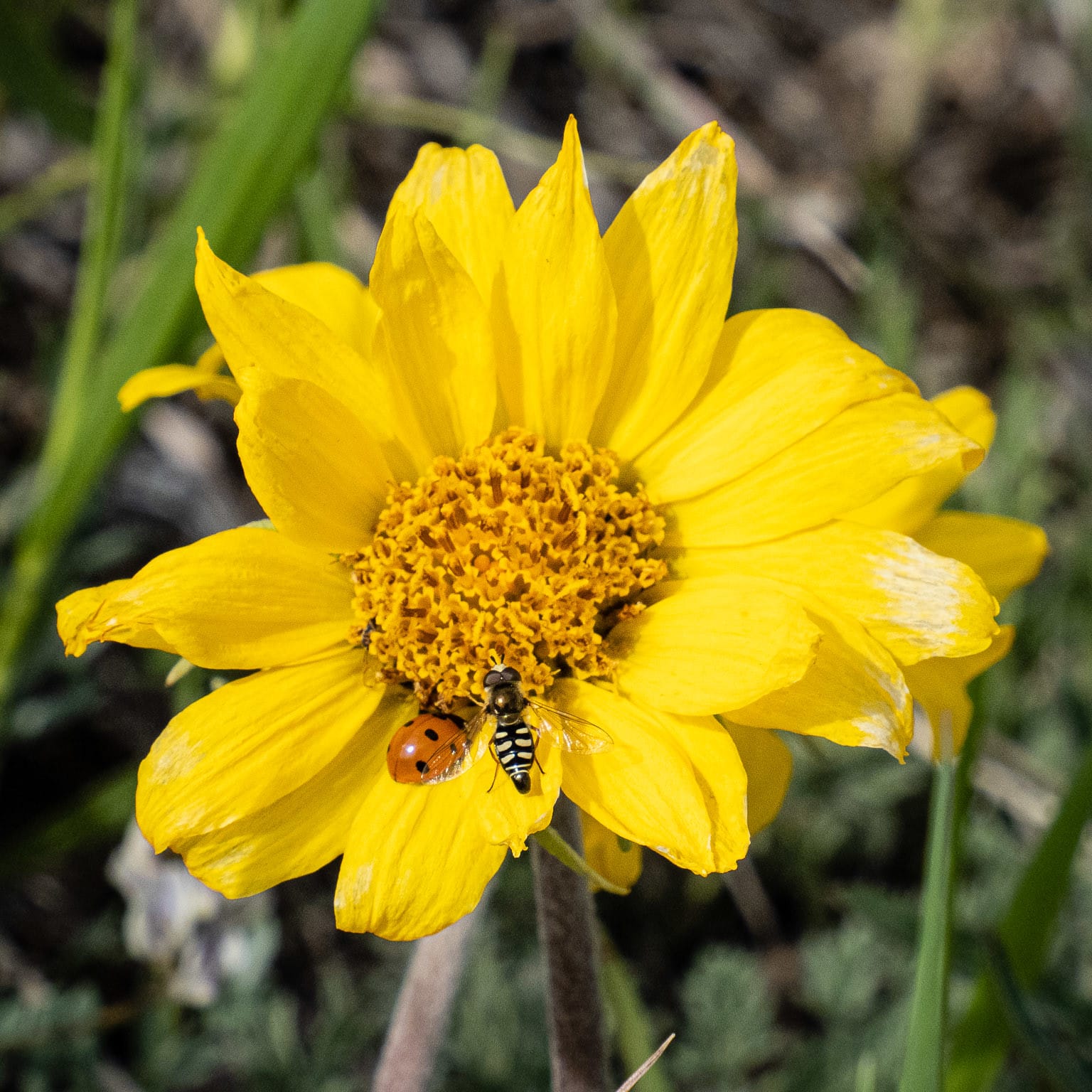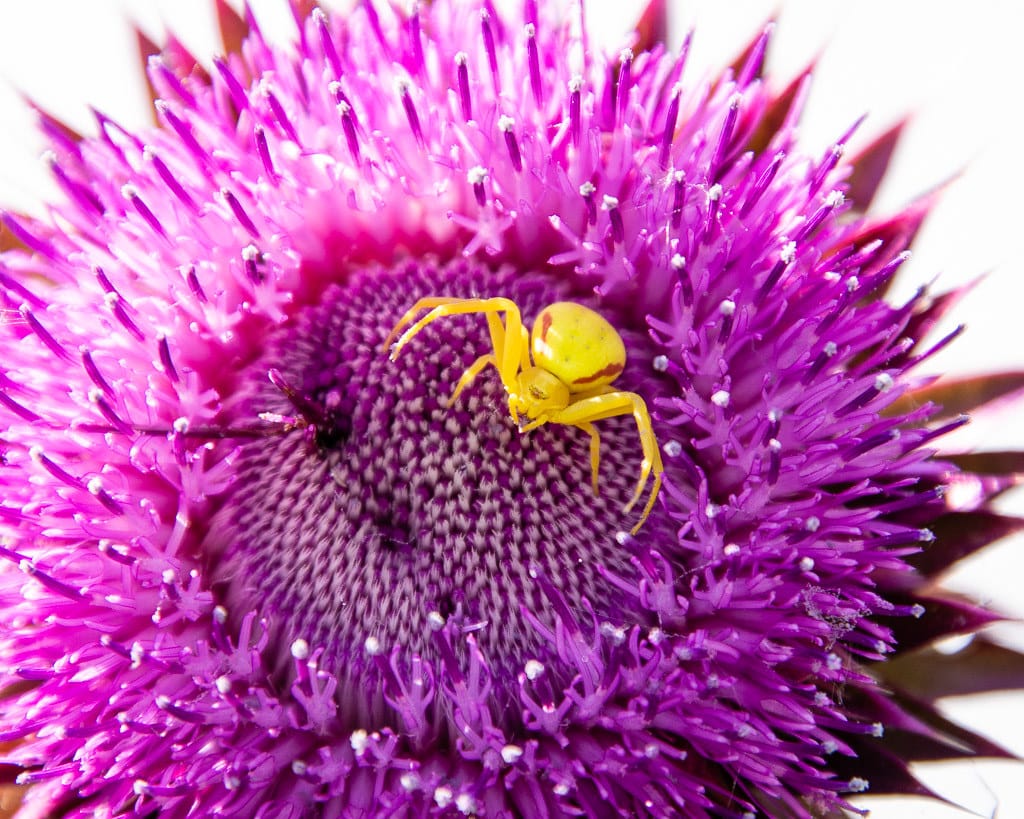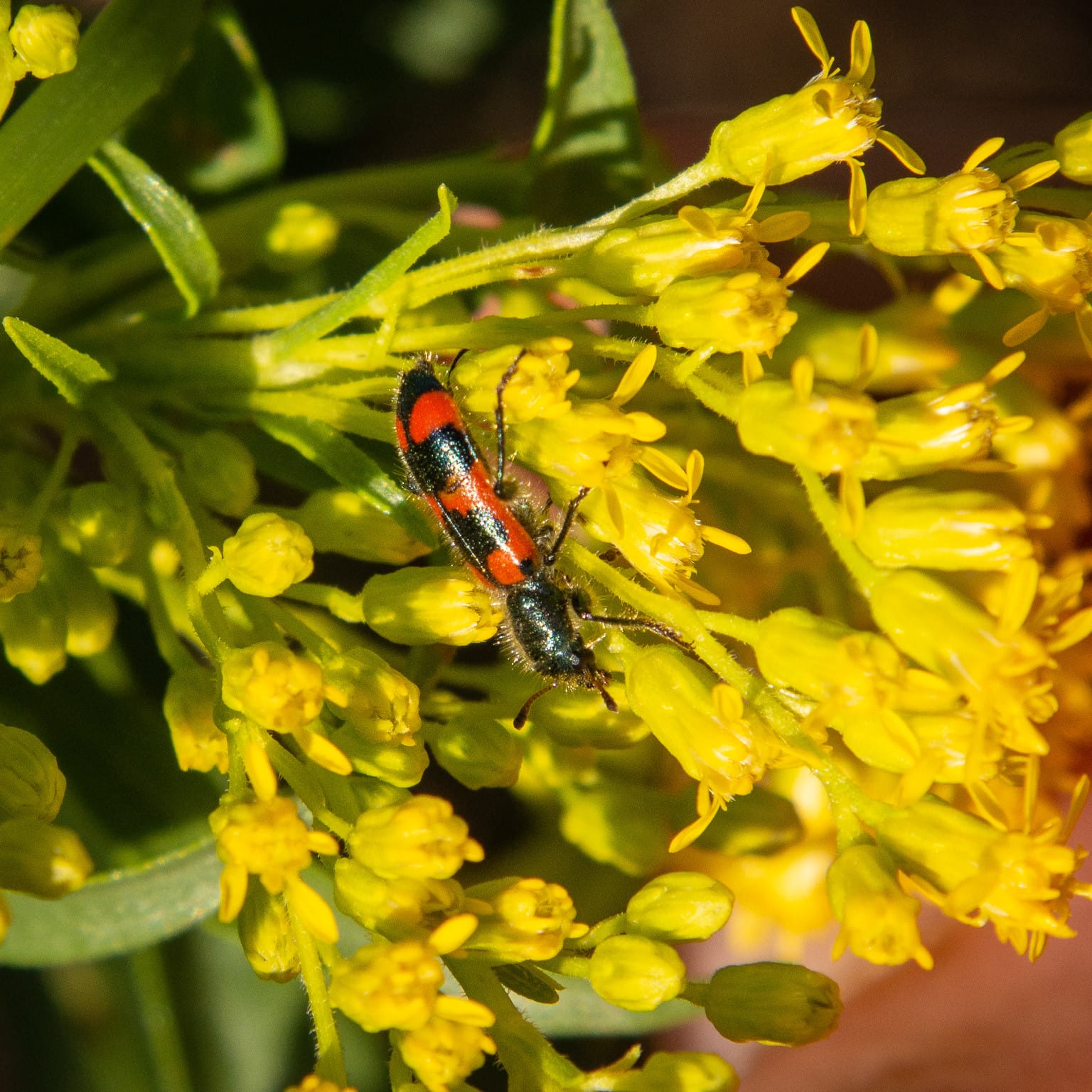Mention pollinators and we automatically think of bees, but there are so many other pollinators, including flies, beetles, moths, butterflies, wasps, and spiders. Here are just a few that you’ll find in Western Canada.
Hawk Moths
Hawk Moths fly and move like hummingbirds and can be seen hovering in front of a flower while they unfurl their long tongue (proboscis) and insert it in the flower to sip the nectar. While the moth drinks, its proboscis picks up pollen, which will then be passed along to the next plant it visits. Hawk moths can travel long distances, further than birds or bees, so the next plant visited could be more than 18 miles away. While hawk moths don’t pollinate food crops, they are important pollinators of many native plants.
Hawk Moths have fast-beating wings and a furry, broad body and can be found in gardens, meadows, and near forests across Canada and the United States. The caterpillars are green with a horn at the rear end and rely on honeysuckle, hawthorn, cherry, and plum trees for food.

Hoverflies
Hoverflies, also known as flower flies, are often seen hovering over flowers. The adults are 8-15 mm long with one set of transparent wings. Hoverflies are harmless to most mammals, although they sometimes mimic the appearance of stinging insects as a form of self-protection.
Unlike hummingbirds and hawk moths, adult hoverflies land on the flowers to feed and don’t pick up nectar and pollen while hovering. Hoverflies are second only to bees in importance as pollinators of both crops and wildflowers, picking up and transferring pollen from the little hairs covering their bodies. They prefer open flowers where it’s easy to access the nectar.
Hoverfly larvae provide a valuable service as they are voracious eaters and often feast on plant-sucking insects. The females often lay their eggs in the middle of an aphid colony, providing a ready source of food for the larvae. A single larvae can eat up to 400 aphids during its developmental stage.
Clouded Sulphur Butterflies
Clouded Sulphur Butterflies are one of the most common and widespread North American butterflies, reaching their greatest numbers in late summer and early fall. The majority have light yellow wings with a black border on the upper side, although there is also a greenish-white version. The underside usually has 2 silver spots circled in pink. The caterpillars are green with a dark stripe down their back and light stripes on their sides.
Clouded sulphurs use their long proboscis to drink nectar from a wide variety of flowers, including clovers, milkweeds, goldenrods, asters, dandelions, thistles, and sunflowers. They pick up pollen on their bodies and pass it along to the next flower they land on. Like other butterflies, they prefer brightly coloured flowers that provide landing platforms where they can rest while feeding.

Crab Spiders
Crab spiders are shaped like crabs with a large abdomen pointing backwards and front legs that are twice as big as their back legs. They are usually coloured to match their surroundings and some species can change their colour to match the flower they're hiding on as they lie in wait, ready to jump out and ambush their prey.
Crab spiders are somewhat contradictory pollinators. They pick up pollen when they move from one flower to another, sipping nectar and searching for a mate to pair with. They eat insects and larvae that would otherwise damage the plants, but they also deter or kill and eat other potential pollinators, such as bees and flies.

Wasps
Wasps may be an unwanted guest at a summer picnic, but they play an important role in controlling pests and pollinating plants.
There are over 2,500 species of wasps in North America. The best known are the brightly-coloured ones that buzz around us and sting. But only 50 species sting, and the vast majority are solitary. Unlike bees, wasps have a pointed abdomen and a narrow waist separating the abdomen from the thorax. Bees are usually hairy, while wasps are less so.
Most wasps are carnivorous and eat insects. As a result, they’re extremely beneficial as nearly every pest insect is preyed on by a wasp species, either as food or as host for its parasitic larvae. But they also need to drink nectar or eat pollen to stay healthy and will pollinate plants while searching for prey or eating. Some studies have shown that wasps become primary pollinators if bees are absent.

Checkered Beetles
Beetles were around 200-300 million years before bees and some of the plants that they pollinate, such as magnolias, have an equally long history.
Checkered beetles are common in North America. They are long (5-24 mm), narrow, covered with bristly hairs, and are usually brightly coloured in a checkered pattern. Some prey on insects found on or under tree bark, while others prey on the larvae of bees, wasps, or even grasshoppers or eat decomposing animal matter.
Checkered beetles can also be found on flowers where they eat pollen and flower-visiting insects. They prefer plants with a strong scent as they rely on smell to locate them. The beetles are usually found on plants with cup-like flowers (magnolia, water lily) or clusters of small flowers. In Western Canada, you can find checkered beetles on goldenrod, sunflower, and yarrow. The plants need to be able to produce plenty of pollen for the beetles to eat with some to spare for them to distribute to other plants. The pollen grains stick to their bodies as they move from plant to plant.
Further Information
Prairie Pollination [The Manitoba Museum]
Non-Bee Insects Are Important Contributors to Global Crop Pollination [PDF, Proceedings of the National Academy of Sciences]
Why Hawk Moths are the Underdogs of the Pollinator World [Smithsonian Magazine]
How Spiders Can Harm and Help Flowering Plants [Science Daily]
How We Can Stop Hating Wasps [Bug Eric]
Beatlemania: Meet Nature’s Unsung Pollinators [WWF-Canada]
Photo credit: https://www.flickr.com/photos/apmckinlay/
EcoFriendly West informs and encourages initiatives that support Western Canada’s natural environment through its online publication and the Nature Companion website/app. Like us on Facebook, follow us on Twitter or Mastodon, or subscribe by email.
